Over the years, I’ve encountered countless concerned pet owners who have approached me with questions about their furry companions coming into contact with various plants, especially during the warmer months. One of the most frequent concerns? Poison ivy. While many of us are familiar with the itchy repercussions of a poison ivy encounter, there’s often uncertainty when it comes to our four-legged friends. Can dogs get poison ivy? The short answer is yes, but it is rare. In this article, we will delve into related concerns about poison ivy, poison sumac and poison oak. My holistic approach emphasizes understanding the entirety of the situation, from prevention to treatment, ensuring that your pet remains safe, healthy, and happy. Let’s explore this topic together.

Can Dogs Get Affected by Poisonous Plants?
Absolutely. Just as humans can experience adverse reactions from certain plants, dogs too can be affected by various toxic flora. Their curious nature often leads them to sniff, lick, or even consume parts of plants that might be harmful. It’s crucial for dog owners to be aware of the common poisonous plants and their potential effects on pets. Let’s delve deeper into some of the most frequently encountered poisonous plants for dogs.
Can Dogs Get Poison Ivy?
Poison ivy, known scientifically as Toxicodendron radicans, is notorious for causing itchy rashes in humans. But what about dogs? While their fur provides some protection, areas with thin or no fur, such as the belly or muzzle, are vulnerable. If a dog comes into direct contact with the plant’s oil, urushiol, they can develop symptoms similar to humans. Moreover, if they ingest it, the consequences can be more severe, including gastrointestinal distress.

Can Dogs Get Poison Sumac?
Poison sumac (Toxicodendron vernix) is another plant that contains the irritant urushiol. While less common than poison ivy, its effects can be more potent. Dogs exposed to poison sumac can exhibit symptoms like redness, swelling, and itching. Ingesting any part of this plant can lead to drooling, vomiting, and diarrhea.
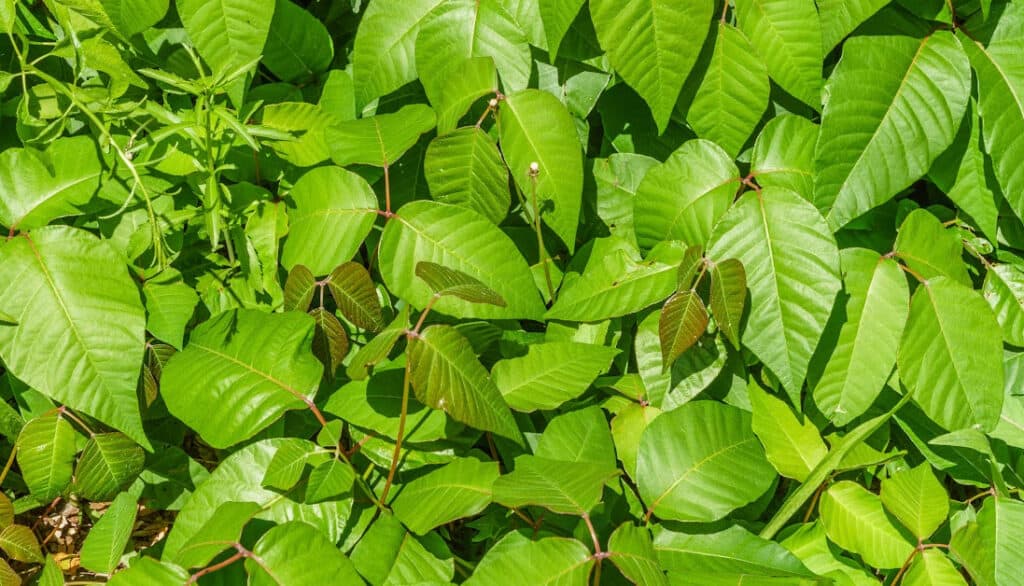
Can Dogs Get Poison Oak?
Poison oak, or Toxicodendron diversilobum, is similar in nature to poison ivy and sumac. Found mainly on the West Coast of the U.S., it can cause skin irritations in dogs, especially in areas with less fur. The symptoms are akin to those of poison ivy and sumac, with itching, redness, and possible swelling.
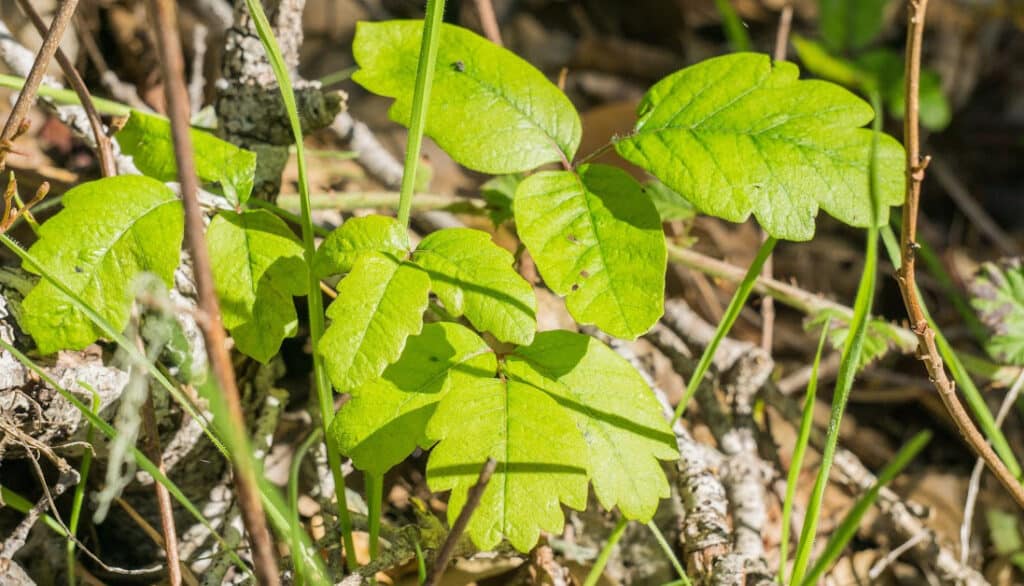
Awareness is the first step towards prevention. By recognizing these plants and understanding their potential effects on our canine companions, we can take proactive measures. Whether it’s avoiding areas where these plants are prevalent or knowing how to treat potential exposures, being informed is key to ensuring the well-being of our beloved pets.

Signs & Symptoms of Poison Ivy in Dogs
While dogs have a natural protective barrier against many environmental irritants thanks to their fur, they are not entirely immune to the effects of poison ivy. When a dog comes into contact with poison ivy, especially in areas with less fur coverage, they can exhibit a range of symptoms. Recognizing these signs early can make a significant difference in managing the situation and ensuring your dog’s comfort.
Physical Symptoms
- Redness and Swelling: Just as in humans, one of the first signs of poison ivy exposure in dogs is redness of the skin. This can be accompanied by swelling, especially if the dog has been scratching the affected area.
- Blisters and Sores: In more severe cases, blisters filled with fluid can form on the skin. If left untreated or if the dog continues to scratch, these can turn into open sores, increasing the risk of secondary infections.
- Itching: Itching is a hallmark symptom of poison ivy exposure. You might notice your dog scratching, biting, or licking the affected area more than usual.
- Dry, Flaky Skin: Over time, the affected skin may become dry and flaky, especially if it’s been frequently scratched.
Behavioral Symptoms
- Restlessness: The discomfort caused by the rash can make dogs more restless than usual. They might have trouble finding a comfortable position to lie down or might frequently change spots.
- Increased Grooming: Dogs might try to soothe the itch by licking, biting, or scratching the affected area, leading to increased grooming behaviors.
- Whining or Vocalizing: Some dogs might vocalize their discomfort by whining, especially if the itching becomes intense.
- Avoidance of Touch: If the affected area is touched or petted, the dog might pull away or show signs of discomfort.
Being vigilant and observant of these signs and symptoms is crucial for dog owners. If you suspect your dog has come into contact with poison ivy, monitoring them for these symptoms can help you determine the severity of the situation and decide on the next steps, whether it’s home care or a visit to the vet. Remember, early detection and intervention can prevent complications and ensure your dog’s swift recovery.
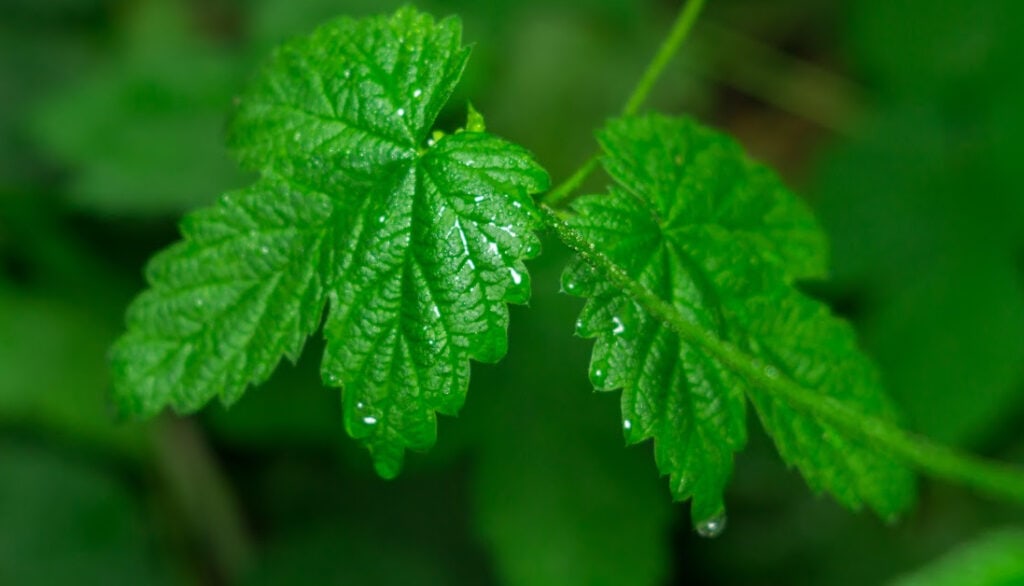
Can Dogs Get Poison Ivy from Humans?
The question of whether dogs can contract poison ivy from humans is a common concern among pet owners, especially those who have recently been exposed to the plant. Let’s delve into this topic to understand the dynamics of cross-contamination and the risks involved.
Understanding Urushiol Transfer
The culprit behind the itchy rash associated with poison ivy is an oil called urushiol. When humans come into contact with poison ivy, this oil adheres to the skin, clothing, and any other objects it touches.
- Direct Transfer: If a person has urushiol on their skin or clothing and then pets their dog, there’s a possibility of transferring the oil to the dog’s fur. While the dog might not immediately show symptoms, they can become a carrier of the oil.
- Indirect Transfer: Objects like gardening tools, shoes, or camping gear that have come into contact with poison ivy can also have traces of urushiol. If a dog comes into contact with these objects, they can get the oil on their fur.

Risks to Dogs
- While dogs have a natural barrier in the form of their fur, areas with thin or no fur (like the belly or muzzle) are vulnerable. If urushiol is transferred to these areas, dogs can develop symptoms of poison ivy exposure.
Risks to Humans
- Even if the dog doesn’t show symptoms, they can act as a carrier for urushiol. If a person touches a dog that has the oil on its fur and then touches their face, eyes, or other sensitive areas, they can develop a rash. This is especially concerning for individuals who are highly sensitive to poison ivy.
Prevention and Precautions
- Wash Up: If you’ve been in an area with poison ivy, it’s essential to wash your skin, clothing, and any gear thoroughly to remove traces of urushiol.
- Limit Contact: Until you’re sure you’ve removed all the urushiol, avoid close contact with your dog to prevent transfer.
- Clean Your Dog: If you suspect your dog might have come into contact with urushiol, give them a gentle bath using pet-friendly shampoo. Make sure to wear gloves to protect yourself during the process.
While the risk of dogs getting poison ivy from humans is relatively low due to their protective fur, it’s not impossible. Being aware of the potential for cross-contamination and taking preventive measures can ensure both you and your canine companion remain itch-free and healthy.

Poison Ivy Treatment for Dogs
If you suspect your dog has come into contact with poison ivy, it’s essential to act promptly to minimize discomfort and prevent complications. While a mild reaction can often be managed at home, severe cases or symptoms indicating ingestion of the plant warrant a visit to the vet. Here’s a guide on how to approach poison ivy treatment for dogs.
Immediate First Aid Steps
- Wear Gloves: Before handling your dog, put on gloves to protect yourself from potential urushiol transfer.
- Gentle Bath: Using a pet-friendly shampoo, give your dog a thorough bath. This will help remove any urushiol oil that might be on their fur. Ensure the water is lukewarm and rinse thoroughly.
- Avoid Human Products: Do not use calamine lotion, hydrocortisone creams, or other human skin products on your dog unless advised by a vet. Some ingredients might be harmful if ingested.
Home Remedies and Over-the-Counter Solutions
- Oatmeal Bath: An oatmeal bath can soothe itching and inflammation. Use colloidal oatmeal or grind regular oatmeal into a fine powder, mix it with water, and apply it to the affected areas.
- Aloe Vera: Pure aloe vera gel can help soothe the skin. Ensure the product doesn’t contain any added ingredients that might be toxic to dogs.
- Over-the-Counter Antihistamines: Some antihistamines, like diphenhydramine (Benadryl), can be given to dogs to reduce itching. However, always consult with a vet for the correct dosage and to ensure it’s safe for your specific dog.
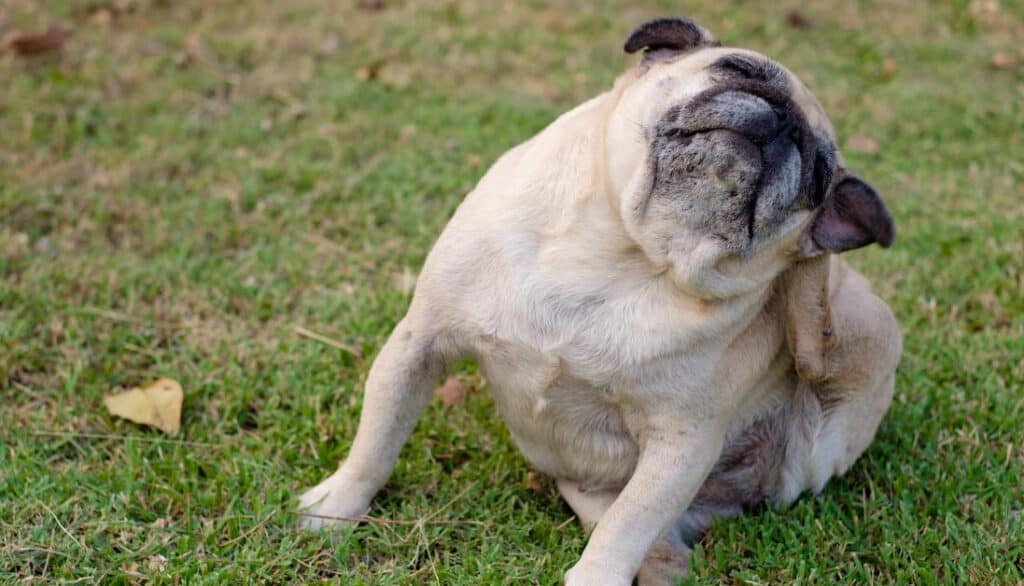
What Not to Do: Common Myths Debunked
- Do Not Use Alcohol or Bleach: These can irritate the skin further and are not safe for dogs.
- Avoid Tight Bandages: If you’re trying to prevent your dog from scratching, don’t wrap the area too tightly as it can hinder circulation.
- Do Not Let Them Scratch: While it’s challenging, try to prevent your dog from scratching the affected area. Scratching can lead to open sores and secondary infections.
Monitoring and Follow-Up
- Keep an Eye on the Affected Area: Monitor the rash for signs of worsening, like increased redness, swelling, or the appearance of pus.
- Watch for Signs of Ingestion: If your dog has ingested poison ivy, they might drool excessively, vomit, or have diarrhea. These symptoms require immediate veterinary attention.
While poison ivy exposure in dogs is usually not a severe concern, it’s essential to approach the situation with care and knowledge. By understanding the appropriate treatment steps and what to avoid, you can ensure your dog’s swift recovery and minimize their discomfort. Always consult with a veterinarian if you’re unsure about any aspect of treatment or if your dog’s symptoms seem severe.
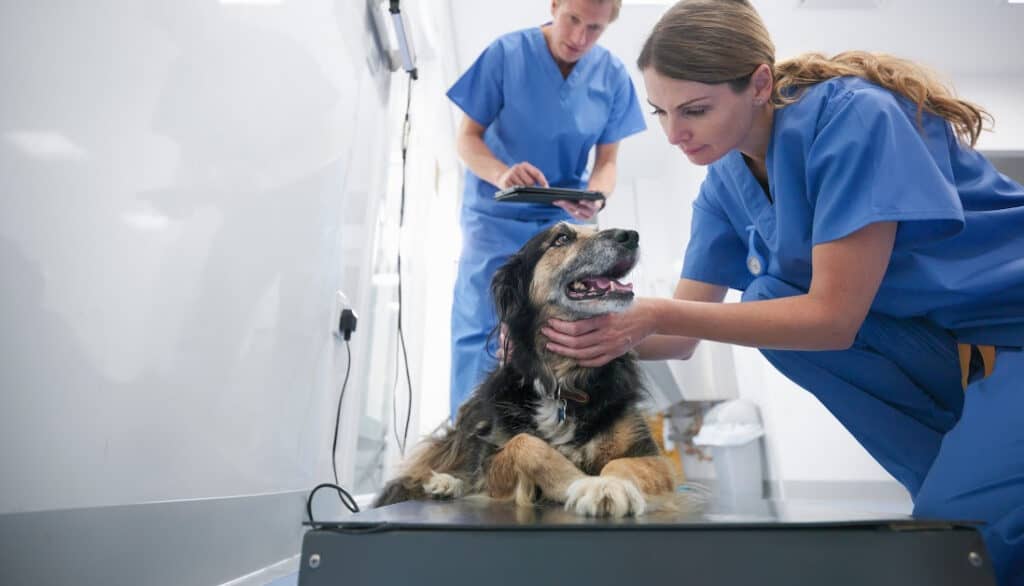
When to Take Your Dog to the Vet for Poison Ivy
While many cases of poison ivy exposure in dogs can be managed at home with proper care, there are situations where seeking professional veterinary intervention becomes crucial. Recognizing these signs and acting promptly can prevent complications and ensure the well-being of your canine companion. Here’s a guide on when it’s time to take your dog to the vet after a poison ivy encounter.
Severe Skin Reactions
- Widespread Rashes: If the rash covers a large portion of your dog’s body or seems to be spreading rapidly, it’s best to consult a vet.
- Blisters and Open Sores: While some redness and itching are expected, the presence of blisters or open sores indicates a more severe reaction that might require medical treatment.
- Signs of Infection: If the affected area becomes increasingly red, swollen, warm to the touch, or starts oozing pus, it could be a sign of a secondary bacterial infection.
Symptoms of Ingestion
- Excessive Drooling: If your dog starts drooling more than usual, it might be an indication that they’ve ingested some of the plant.
- Vomiting and Diarrhea: Gastrointestinal distress, characterized by vomiting or diarrhea, suggests that the dog might have consumed poison ivy and needs immediate attention.
- Loss of Appetite: A sudden disinterest in food or difficulty swallowing can be related to oral exposure or ingestion of the plant.
Behavioral Changes
- Extreme Discomfort: If your dog seems to be in significant pain, is constantly scratching, biting, or licking the affected area, or is unable to find a comfortable resting position, it’s time to seek professional help.
- Lethargy: A sudden decrease in energy levels or an unwillingness to play or engage in usual activities can be a sign of a more severe reaction.
- Agitation or Aggression: Some dogs might become irritable or aggressive due to the discomfort. If your dog’s behavior changes drastically, it’s best to consult a vet.
Unsuccessful Home Treatment
If you’ve tried home remedies or over-the-counter solutions and there’s no improvement after a couple of days, or if the condition worsens, it’s a clear sign that professional intervention is needed.
Your dog’s health and comfort are paramount. While poison ivy reactions in dogs are often mild, it’s essential to be vigilant and recognize when the situation requires a vet’s expertise. Trust your instincts as a pet owner; if something doesn’t feel right or if you’re unsure about any aspect of your dog’s condition, it’s always better to err on the side of caution and seek veterinary advice.
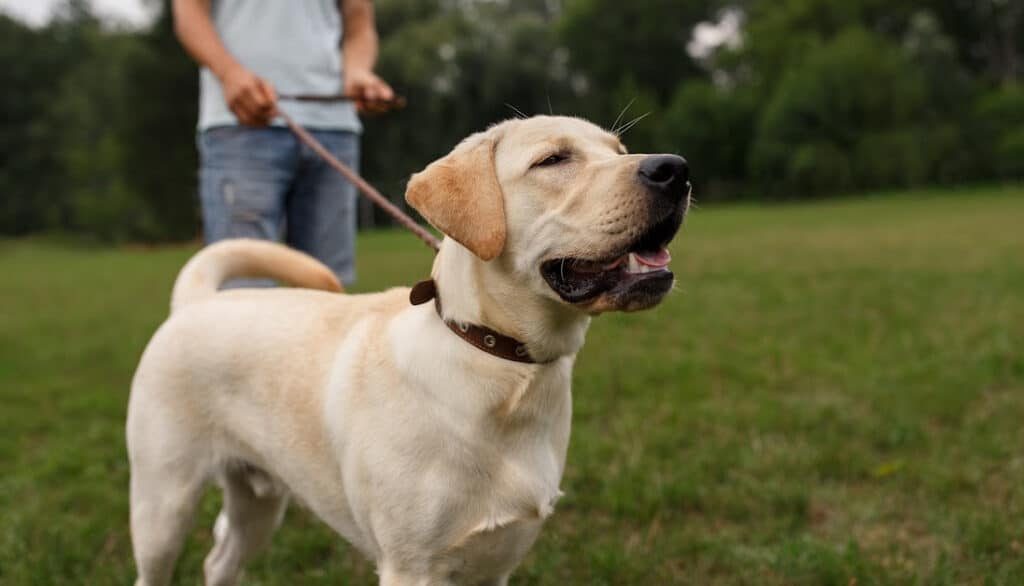
Conclusion
Navigating the world of potential hazards for our furry friends can sometimes feel overwhelming. Nature, while beautiful, contains elements like poison ivy that can pose challenges for both humans and their pets. However, armed with knowledge and awareness, we can ensure that our canine companions enjoy the great outdoors safely.
Understanding the signs of poison ivy exposure, knowing how to treat it, and recognizing when professional help is needed are all crucial components of responsible pet ownership. As we’ve explored in this article, while dogs have some natural defenses against poison ivy, they aren’t entirely immune. By being proactive, observant, and informed, we can quickly address any issues that arise, ensuring our dogs remain healthy, happy, and itch-free.
Remember, our pets rely on us for their well-being. By staying educated on potential hazards like poison ivy and its counterparts, we can provide them with the best care possible. Here’s to many more safe and joyful adventures with our four-legged friends!
Frequently Asked Questions
Yes, while dogs themselves are less susceptible to the effects of poison ivy due to their fur, they can act as carriers for the urushiol oil, which causes the rash. If you touch a dog that has come into contact with poison ivy and then touch your skin, especially areas like your face or arms, you can develop a rash.
Dogs exposed to poison ivy may exhibit symptoms like redness, swelling, itching, and in severe cases, blisters or open sores. They might also scratch, bite, or lick the affected area more than usual. Areas with thin or no fur, such as the belly or muzzle, are more vulnerable to these symptoms.
Immediate treatment involves giving your dog a gentle bath with pet-friendly shampoo to remove any urushiol oil from their fur. You can also use home remedies like oatmeal baths or aloe vera gel to soothe the skin. In cases of severe reactions or if the dog ingests the plant, it’s crucial to consult a veterinarian.
If a dog licks or ingests parts of the poison ivy plant, they might experience symptoms like excessive drooling, vomiting, or diarrhea. While the plant is more irritating than toxic, it’s essential to monitor your dog for any signs of distress and consult a veterinarian if you notice severe symptoms or if you’re concerned about the amount ingested.
